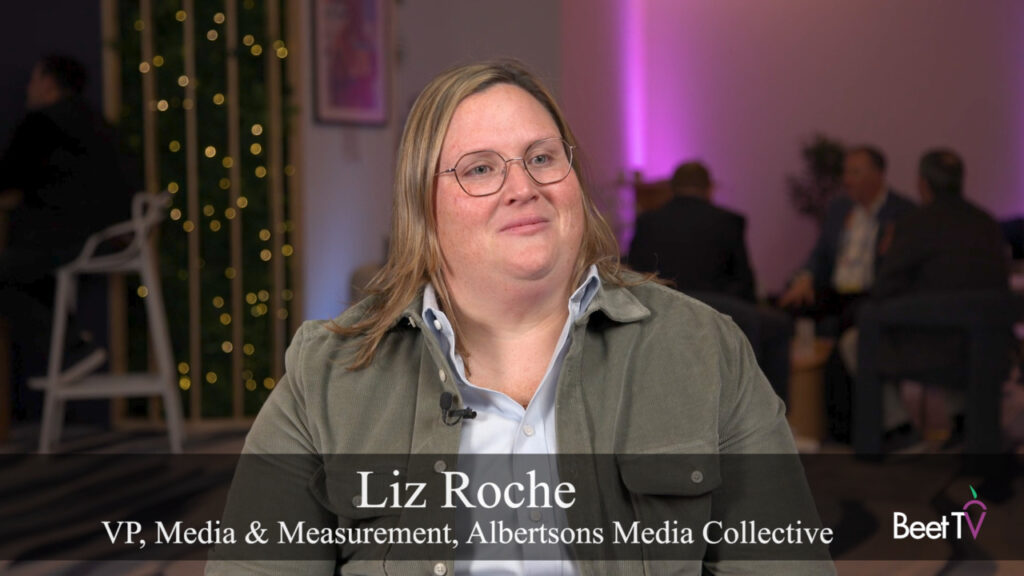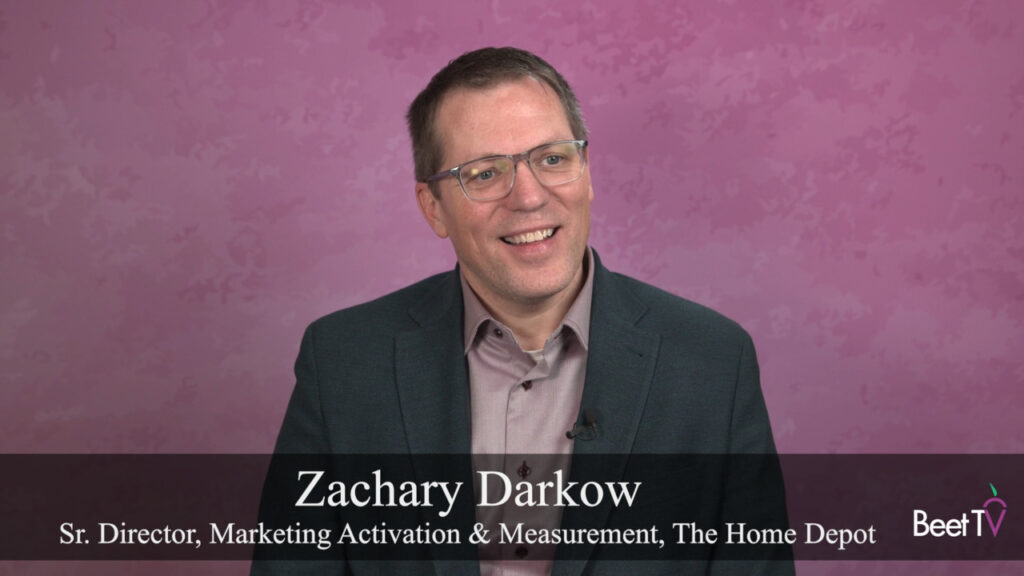If you set aside the semantics of “programmatic” versus “automated” television buying, one thing is quite clear to MediaMath’s Mike Fisher. “We’re there. We’re there at scale.”
There are 65 million households using some type of device to access premium video content in the living room and, for the first time, more than 50% of video starts being delivered on a connected-TV device are ad-supported, the Head of Advanced TV & Video explains in this interview with Beet.TV.
“You’ve seen the viewership change, you’ve seen people embrace it as their primary source of content and you’ve seen these devices take over control of HDMI1 on the TV, which is the most important thing to control,” Fisher says. “No longer is a Roku device a way to get Netflix on your TV. A Roku device is a way to get TV.”
While connected TV definitely is the “low-hanging fruit for what we’re doing at MediaMath today,” within three to five years all linear impressions will become one-to-one addressable and targetable through the rise of IP video, “so we want to be well positioned to be able to play in that space as well.”
MediaMath doesn’t buy or arbitrage TV inventory. Rather, it sees itself as the connection point between buyers and sellers, according to Fisher.
“We’ve curated our list of supply sources that we do most of our transactions with down to, say, the top twenty percent of supply sources that drive eighty percent of the meaningful impressions that marketers are looking for,” he says.
Those sources include five network groups and three big virtual MVPD services in a fraud-free environment. “We’re never more than one hop away from the end seller,” Fisher adds.
MediaMath’s pitch to traditional TV buyers is one of reach and frequency and how they can shift a portion of their spend “to the same inventory and the same viewer model and the same screen they know how to buy but doing it in a smarter, more measureable way.”
The company tells the same story to digital buyers but with a twist since they already know how to buy audiences, measurable impressions and retargeted campaigns. “For the first time, a digital buyer has the ability to transact on the biggest most trusted screen in the house in a way that they know how to do and in a way that fits into their business model.”
With its cross-device graph and audience targeting capabilities, MediaMath sees itself as leading the charge in tying back actual down-funnel attribution to upper funnel branding metrics.
“Being able to say the first time a viewer is exposed to an ad campaign or a brand’s message should happen in video. Whether or not that’s web, mobile, tablet or TV, video is the best way to tell that upper-funnel branding story,” says Fisher.
“But that doesn’t get you all the way there as a marketer. You want to be able to find that household, find the users in that household, and tell a down-funnel story to drive attribution and actual action on the right screen with the right message at the right time.”
This video is part of the Beet.TV series titled Targeting Today’s TV Viewer sponsored by DISH Media Sales. It is published along with this DISH Media Sales Straightforward Guide in ADWEEK. For more videos from the series, please visit this page.






































